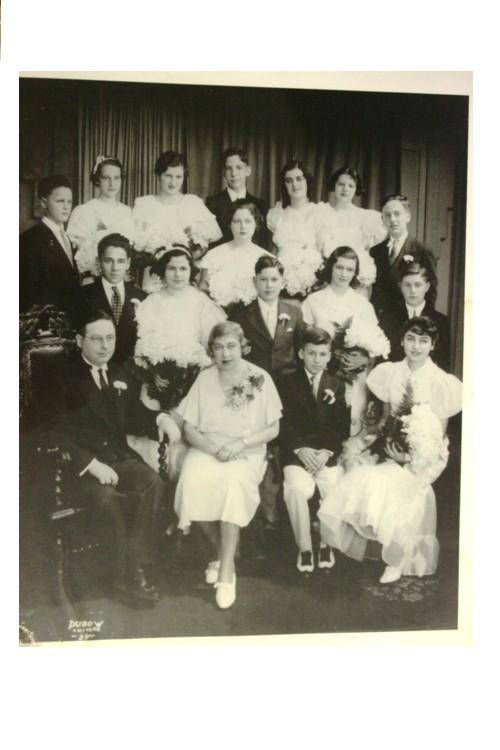Survival and Revival in the 1930s
Survival and Revival in the 1930s
 Aside from the typical adjustment period with a new rabbi and the ongoing reform of the synagogue service, the first two years of Lipman’s rabbinate passed uneventfully. Then, the New York Stock Exchange crashed in late October 1929, sending a wave of panic across the nation and affecting investments from coast to coast. As the second largest industrial center in the country and as a crossroads between the developing American West and the developed, urbane Northeast, Chicago was particularly hard hit by the tumbling economy.
Aside from the typical adjustment period with a new rabbi and the ongoing reform of the synagogue service, the first two years of Lipman’s rabbinate passed uneventfully. Then, the New York Stock Exchange crashed in late October 1929, sending a wave of panic across the nation and affecting investments from coast to coast. As the second largest industrial center in the country and as a crossroads between the developing American West and the developed, urbane Northeast, Chicago was particularly hard hit by the tumbling economy.
Beth-El, like almost every synagogue in Chicago, felt the effects of the stock market crash. By 1931, the temple was financially insolvent, and, in 1932, with no options remaining, the temple defaulted on its mortgage and the property was foreclosed. Nevertheless, the synagogue community remained resilient in the face of great difficulty; dues collection was maintained, and social and religious programming continued to be offered on a tentative basis at the Palmer Square facility. Throughout the early 1930s, membership dues were constant at $10 per year—roughly 25 cents per week.
By this time, reflecting the religious climate of the Midwest, the synagogue had become a classically Reform institution. Throughout Rabbi Lipman’s tenure, Shabbat services were held exclusively on Friday evenings, no b’nai mitzvah ceremonies were performed, and religious instruction was limited to confirmation. The temple became a locus of social activity in Logan Square, continuing the tradition of Molner Hall on Crystal Street with dances, parties and cultural events, but offering few opportunities for religious services and study.
 In 1936, all efforts to transform the synagogue back into a gathering place for prayer were thwarted when the temple treasury—painstakingly amassed in the thinnest years of the Depression for the express purpose of constructing a new sanctuary at Palmer Square—disappeared, along with a congregant. Further, in 1936, the secretary of the Beth-El Cemetery Association absconded with the temple’s entire savings, dealing a severe blow to the already wounded congregation.
In 1936, all efforts to transform the synagogue back into a gathering place for prayer were thwarted when the temple treasury—painstakingly amassed in the thinnest years of the Depression for the express purpose of constructing a new sanctuary at Palmer Square—disappeared, along with a congregant. Further, in 1936, the secretary of the Beth-El Cemetery Association absconded with the temple’s entire savings, dealing a severe blow to the already wounded congregation.
Additionally further weakened by dwindling membership and abysmal property values, Beth-El was purchased by a group of Conservative Jews who had recently left their congregation on Fullerton Avenue and intended to turn the Palmer Square facility into a local branch of the Jewish People’s Institute. As plans for this conversion were drawn up, representatives of the destitute congregation met with the new owners to negotiate an arrangement that would permit Beth-El to temporarily use the building for services free of charge until a new treasury could be established. The owners accepted the terms of these negotiations, and Beth-El thereby subsisted on a month-to-month basis for much of 1936 and 1937.
Meanwhile, through much penny-pinching, the Beth-El Sisterhood prepared to undertake the largest rescue effort that the temple had ever seen. Before the new owners of the property could realize their plan, the sisterhood succeeded in buying back Palmer Square and saved the religious school, which had been deemed a separate fiscal entity from the temple proper. By the end of 1937, the land was rightfully back in the hands of the temple. The sisterhood was charged with the management and administration of the Hebrew and religious schools, and the Beth-El community was immensely indebted to the shrewd resourcefulness and courage of these remarkable women.
Mon, October 20 2025
28 Tishrei 5786
Quick Links
Email Us
Privacy Settings | Privacy Policy | Member Terms
©2025 All rights reserved. Find out more about ShulCloud



